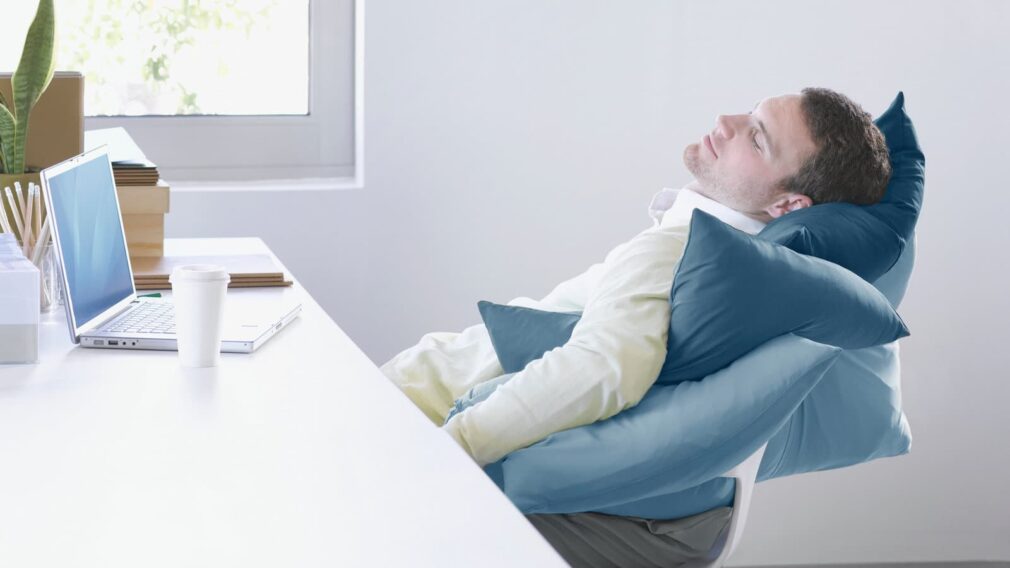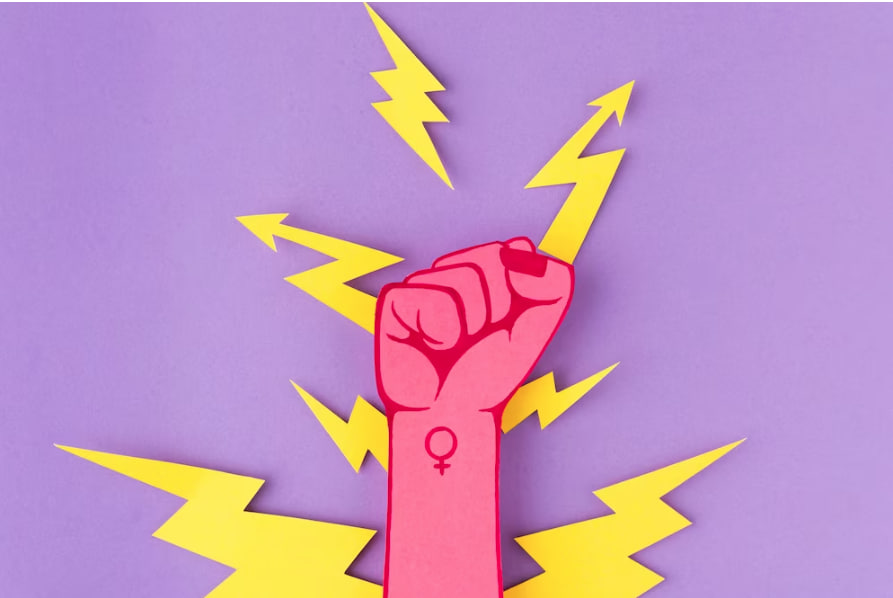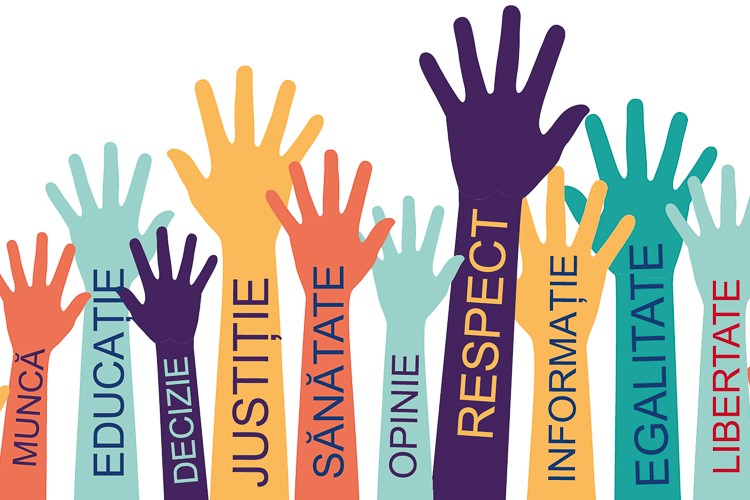Taking a nap at work turns out to be not only pleasant but also good for business. Some U.S. employers already allow their employees to sleep during the day. However, opponents of this practice also have strong arguments.
“Employees who like to sleep at work solve third more tasks than those who sleep only at home. A short nap helps you reset, and it’s the best alternative to endless tea parties and smoke breaks,” says Bernard Ross, founder of Courseburg, a continuing education course selection service.
At first, Ross put a pouf in his office for lounging and reading. But tired employees fell asleep on it more often than reading. Then, instead of fining sleepers, Bernard put several more sofas – just for sleeping.
According to his observations, dozing during working hours, mostly men, about once every two days. Girls rarely fall asleep at work, preferring to finish their business as soon as possible and go home. Employees usually sleep in the afternoon.
“A short nap, 20-40 minutes, gives strength for two to four hours of concentrated work. This is more productive than fighting a nap in an office chair,” Ross believes. According to him, the benefits of daytime sleep for business are tangible: people more easily agree to additional and extracurricular work, offer new ideas more often, and generally look brighter.
Daytime sleep is a common practice in Southern Europe and Latin America, in China and Japan, but in the U.S., a siesta is still exotic.
Exercise for the brain

In favor of a quiet hour are the scientists. “A 30-minute afternoon nap stimulates the attention and creativity of workers, and noticeably improves their mood,” assures Richard Wiseman, a psychologist at the University of Hertfordshire. Dr. Nerina Ramlahan of the University of Leeds argues that a short day’s sleep reduces the risk of diabetes and cardiovascular disease, and also helps to overcome depression and other side effects of lack of sleep, which are equivalent to the effects of heavy alcohol intoxication. According to researchers from the Rotterdam School of Management, a quiet hour saves companies billions because employees become less productive without it.
Consultants David Allen and Tony Schwartz told The Harvard Business Review that people function most effectively in cycles of an hour and a half, between which they need breaks of 10-20 minutes for a snack or a nap. This approach is still alien to most companies, but in reality, of two people of roughly equal ability, the one who works intensely throughout the day will produce less than the one who regularly gets out of the “squirrel wheel.
In 1990, the National Sleep Association was founded in the United States. It promoted the idea of “energy sleep” as a solution to the fatigue and lack of energy at work. The idea gained new momentum in 2002 when the U.S. Department of Health and Human Services named combating fatigue and stress at work a social policy priority.
A National Financial Research Agency think tank study last year found that 47 percent of working Americans have trouble sleeping. They do not get enough sleep for three to four working days a week. According to respondents, lack of sleep costs them a loss of 25% of their ability to work, with one in ten not getting enough sleep due to work-related stress. In 2014, the recruiting agency Beagle found that 49% of Americans have fallen asleep at work, and 56% have noticed sleeping colleagues at work. Twelve percent of women and 8% of men said that they almost always want to sleep, with one in four respondents feeling drowsy in the afternoon. According to AlphaInsurance analytical center, insurance companies in the U.S. pay 18 billion rubles a year to fight diseases caused by chronic lack of sleep.
Sleeping on an office daybed or sofa

Workers will never have regular beds in their offices because this is against common sense. Usually, they will have daybeds or sofas in their resting rooms. It is important to make sure that those beds are safe for sleeping.
Here is the list of major dangers for your health and corresponding tips:
- Sofa beds are usually low. They can be dangerous for your back if you will sleep on them with raised legs; it’s even more hazardous than lying on a regular bed. You can exacerbate this problem by using pillows under the knees or head, but instead, you can do something more useful: turn the sofa in such a way that your head and legs were raised. If there is no other option, it would be enough to put a small stool under your feet without raising the back of the bed too much.
- Use a high-quality orthopedic mattress. Mattresses for daybeds have multiple benefits such as their ability to adapt to the shape of your body and to relieve pressure points. It is worth spending more on a quality mattress for better sleep instead of throwing money out the window because you have suffered from back pain after sleeping in your sofa bed.
- Don’t use pillows when sleeping on daybeds or sofas; they may cause the head to be raised too much.
- Don’t sleep sitting on a chair or sofa, even if you won’t wake up with a sore back; at least one leg should be stretched out on the ground. Otherwise, muscles will shorten and you may find it difficult to straighten your spine later.

Sleep is not for wimps
There are not many companies in the United States that encourage regular sleep in the office, but often top managers allow a siesta from time to time. As a rule, this is due to overwork and irregular hours.
For example, before the launch of a conference or the opening of an exhibition the working days of the employees of the marketing agency Cleverra turn into a nightmare: often they have to dismantle the stage after the concert late at night, and in the early morning already carry out surveys of the exhibition participants. And the employees are faced with a choice: to go home for a couple of hours to get back to work early, or stay the night in the office. Many prefer the second choice. They sleep in a special lounge on fold-out couches, and their pajamas are T-shirts from promotions. “Being able to sleep a couple of hours in the office saves a lot of travel time and increases loyalty. Work ceases to be a place of constant stress and is perceived as a second home, “- says the founder of the agency Cleverra Gina Byt.
Her colleagues from the agency Vein Technologies have a similar situation. “We even had the idea to rent a corporate apartment near the office, so that at times of large and busy projects, employees could stay there to sleep”, – says CEO of Vein Technologies Bettany Bull. However, in the end we decided not to spend money on separate accommodation and equipped sleeping quarters for everyone in the office. According to Olga, even a 15-minute nap during working hours increases productivity.
There are industries where the work schedule is regulated by law. For example, drivers should not spend more than 40 hours a week behind the wheel, and for truck drivers, there is a daily limit – you can drive no longer than eight hours in a row. “That’s why the company sends two drivers on many long-distance trips. When one employee is behind the wheel, the second rests on a specially equipped sleeping place in the cab of the truck, and the rest time is paid to the driver, “- explains Lenny Bereyrt, head of the department of labor protection of “Business Line”.
The sleep of remarkable people

- Leonardo da Vinci preferred to sleep for 15-20 minutes every four hours.
- Napoleon Bonaparte slept two hours at night and two hours in the morning.
- Winston Churchill slept from 3 a.m. to 8 a.m. and another hour between dinner and supper.
- Charles Darwin slept from midnight to 7 a.m. and then from 3 to 4 p.m.
- Honoré de Balzac slept from 6 p.m. to 1 a.m., then worked and napped another hour, from 8 to 9 a.m.
- Thomas Mann preferred to sleep from midnight to 8 a.m. and from 4 to 5 p.m.
To sleep or not to sleep?
Lawyers polled by our team claim that employees are free to manage their time during the lunch break, but many HR specialists dislike this practice, saying that people who like to sleep don’t work and demotivate their colleagues. 72% of HR specialists surveyed by Super job in 2014 did not support the idea of allowing employees to sleep in the workplace.
By no means always do the employees themselves want to sleep at work, either. For example, the management of stretch ceiling installation company Master Beaver wanted employees to be able to take light breaks during the workday. A 20-minute sleep capsule seemed like the perfect solution since in a regular restroom, a person risks falling asleep for a long time.
The capsule was installed in the office in 2014. At first, demand was frantic: people lined up, everyone wanted to try it. But over time, enthusiasm waned, and now the capsule is rarely used. “The idea did not take root, employees use the capsule not for recuperation, but for fun,” says Gregory Tile, HR manager at Master Beaver. In his opinion, the investment in the capsule did not pay off. “It’s an image purchase,” he believes.
Perhaps that’s why many companies make break rooms, not for sleeping, but for snacking, reading, and playing games. At the central office of 2GIS, for example, they play console games, table tennis, soccer, hockey, and darts. Periodically competitions are held among employees.
The problem is that not everybody can sleep for 20-30 minutes: most people need at least two or three hours to have a good rest. And you still have to work this time. “Management believes that if an employee doesn’t get enough sleep or doesn’t feel well, it’s better to skip a workday or come to work later,” says Ann Hammock, representative of social-entertainment network “Fotostrana. – There is no tangible effect of increased productivity from the practice of daytime sleep.
According to observations by Bernard Ross, the principle of yawning works in his office: as soon as one employee falls asleep, someone else follows him. And it’s good if after a short nap they get down to work with double energy, but someone may decide that the workday is already over and go home to finish the nap.


